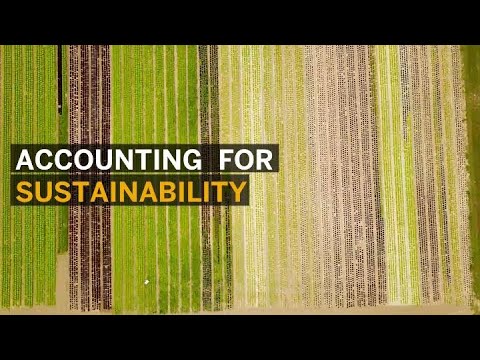“Business as usual” is not the way forward for the global economy, but calling on companies to operate more sustainably is one thing. Rethinking corporate accounting models to recognize ecological and social impacts is quite another. Enter QuartaVista.
Two hybrid trucks pull out of the yard at BODAN, an organic food wholesaler located at Lake Constance in Ueberlingen, Germany. In addition to being more fuel-efficient than conventional vehicles, these hybrid trucks are also extremely quiet – causing less disturbance for local residents, especially at night.
These benefits don’t come cheap, and the additional cost of €45,000 compared to a conventional truck hits profits. The fact that BODAN buys hybrid trucks anyway reflects the self-image of this pioneering organic business.
Given that conventional accounting methods only measure the financial dimension, businesses tend to perceive sustainability solely as a cost factor. This issue – particularly as it applies to agriculture – is what interests Christian Hiss, founder and CEO of Regionalwert AG Freiburg, a citizen shareholder company that channels citizens’ money to build up regional sustainable enterprises.
“I realized more than two decades ago that there is a disconnect between the reality of how agricultural businesses operate and how their operations are recognized in accounting and reporting, which fail to adequately consider social, ecological, and other factors,” says Hiss.
At the same time, we’re witnessing a shift of values in society: The global community is setting new standards through the United Nations’ Sustainable Development Goals (UN SDGs). On top of that, the COVID-19 pandemic has exposed the fragile nature of global supply chains and increased demand for regionally-produced, eco-friendly goods.
But if you want to incentivize businesses to commit to climate and environmental protection, regional production, and training and educating their workers, sustainability has to be more than an ideal; it has to be translated into the language of business: financial accounting.
QuartaVista: A Holistic Accounting Model
This is what the QuartaVista, or “four perspectives,” innovation project funded by the German Federal Ministry of Labor and Social Affairs is all about.
“I think we’re seeing the beginning of a movement,” says Reiner Bildmayer, project lead for QuartaVista at SAP. “Sustainability will become such a key business decision factor that, pretty soon, a traditional profit margin will no longer be considered as important as it once was.”
As an “experimentation space,” QuartaVista expands the view of a company from one to four perspectives: finance, ecology, society, and knowledge. The partners involved in the project are seed producer Bingenheimer Saatgut, organic food wholesaler BODAN, organic grain product manufacturer Bohlsener Mühle, AI-enhanced software specialist Cognostics, charitable research and teaching organization Parmenides Foundation, Regionalwert AG Freiburg, and SAP. Together, they are looking at how sustainable behaviors can be translated into quantifiable metrics.
“What’s new about QuartaVista is that it shows achievements for sustainable management, but also risks, on the assets or the liabilities side of the balance sheet, encouraging more sustainable business practices,” Hiss says.

Visualizing Sustainability in a Way the Finance World Understands
But which targets and performance metrics need to be measured? And how, critics ask, can you put an objective monetary value on sustainability efforts?
Regionalwert AG Freiburg and other project partners have made a start and have defined specific KPIs (key performance indicators) derived partly from the 17 UN SDGs. Taking the example of Goal 4: Quality Education, you can ask, ‘Do companies build up and keep their knowledge capital, or is it lost?’ Sustainability practices can be accounted for, says Hiss. “The key thing is to identify the right way of quantifying them, the right account to post them to – in QuartaVista, we show how it’s done.”
SAP’s role in the partnership is to map the QuartaVista accounting approach to a dashboard. The dashboard visualizes sustainability in a way that the world of finance understands. “We’re trying to quantify sustainability efforts, to make them accessible to the financial community – and thus create visibility,” says Bildmayer.
Fair Prices and Transparency for Consumers
If efforts in the three dimensions of “knowledge,” “nature,” and “society” are seen as business assets, they can be factored into prices. BODAN, for example, has been competing against businesses in the conventional food industry since it first began trading. Right now, if you only compare prices, eco-products come off badly.
Yet the COVID-19 pandemic has shown that consumers are increasingly basing their product choices on non-financial values, such as origin, freshness, and transparency. In spring this year, BODAN recorded revenue increases of up to 40 percent per month, which cannot be attributed solely to more home cooking and increased stockpiling by private households.
“If you factor the non-financial aspects of ecological farming into your calculation, such as soil conservation or water pollution control, then organic products are already cheaper today than conventionally manufactured ones,” argues Sascha Damaschun, one of the managing directors at BODAN, which invests in organic plant breeding, sustainable seed development, and more.
“The genetic diversity of our crops is a relevant economic value,” he explains. Sustainably bred plants are often more resilient to climate change than high-performance varieties used in conventional farming, and do not require synthetic fertilizers or pesticides. On the QuartaVista dashboard, BODAN can show sustainable investments of around €70,000 made between 2014 and 2019.
The debate reaches far beyond the QuartaVista project. In an interview on German TV channel ZDF, Professor Maja Göpel, political economist and sustainability scientist, insisted that, “Prices must tell the ecological truth.”
So far, companies that externalize their environmental costs have been at an advantage, she said. So, how can we rejig tax and levy systems so that companies with sustainable business models can be competitive?
“One very, very important change would be to adopt environmental pricing,” Göpel explained. “That way, ecologically sustainable companies could differentiate themselves from their competitors, and we’d see technologies that facilitate sustainable business entering the market.”
Sustainability KPIs as Strategic Management Tools
Companies like BODAN have engaged in sustainability reporting for years. But a sustainability report reflects the past and has not been an integral part of the corporate balance sheet. The QuartaVista model, on the other hand, offers insights at the point when investment decisions are made and provides a future perspective. As such, QuartaVista functions as a kind of navigation system that helps companies adopt a future-oriented management approach.
Bohlsener Mühle makes a point of deriving all of its raw materials from organic sources. Overall, 40 percent of its sources are regional and for grain, its main raw material, that figure is 85 percent. Sustainability has been part of the company’s DNA since its founding in 1979 and lies at the heart of its operating model, which includes using green energy. The company’s own spelt hull pellet heating system generates sufficient heat from the by-products of spelt wheat processing to supply 75 local households, producing a saving of 400 tons of CO2 in 2019 alone. Bohlsener Mühle is also one of the many businesses seeing a rise in demand for regional and organic products as a result of the COVID-19 pandemic.
The QuartaVista method is at the heart of Bohlsener Mühle’s business operations. It has defined KPIs for knowledge acquisition and retention, climate footprint, and quality of work in the supply chain. These sustainability KPIs should rank equally with economic KPIs in the balance sheet, says Philip Luthardt, sustainability manager at Bohlsener Mühle.
This is a big challenge for employees. “Now, all of a sudden, they’re having their performance measured not only against sales and production targets, but also against sustainability KPIs.” But at the same time, sustainability is gaining a new level of appreciation at the company. “This is a new way of thinking that enables us to integrate sustainability into the key areas of corporate management and evaluation,” says Luthardt.
Real Consequences Drive Real Change
Bingenheimer Saatgut has also made sustainability one of its company goals. “You’re not just selling a product,” says Commercial Manager Isabelle Sanchez. “As a company, you need a culture, a guiding vision.” In pursuing its vision, the company sources primarily from regional suppliers, uses renewable energy, and aims to reduce the number of employees on temporary contracts. The huge wave of orders it received during the pandemic – about twice as many as in the same period last year – shows that consumers are headed in the same direction.
If society truly wants a shift toward more sustainability, however, incentives must be put in place. “A company that uses green energy, for example, should enjoy tax breaks or other financial incentives that are not open to a competitor that uses nuclear-generated power,” says Sanchez.
The logical consequence of that would be a shift in the balance of power in the market. “If companies are obliged to account for risks, if there are standards that apply to everyone and are audited, then every company will be forced to act,” adds Sanchez. “Otherwise, they would no longer be competitive.” In the long term, Sanchez sees QuartaVista as an instrument “that will help us get climate change under control.”
The project partners want QuartaVista to “keep strictly to the logic of business,” says Hiss, and thus create a vision for a genuine economic transformation. The project, which began in the fall of 2018, will run until the end of February 2021.




